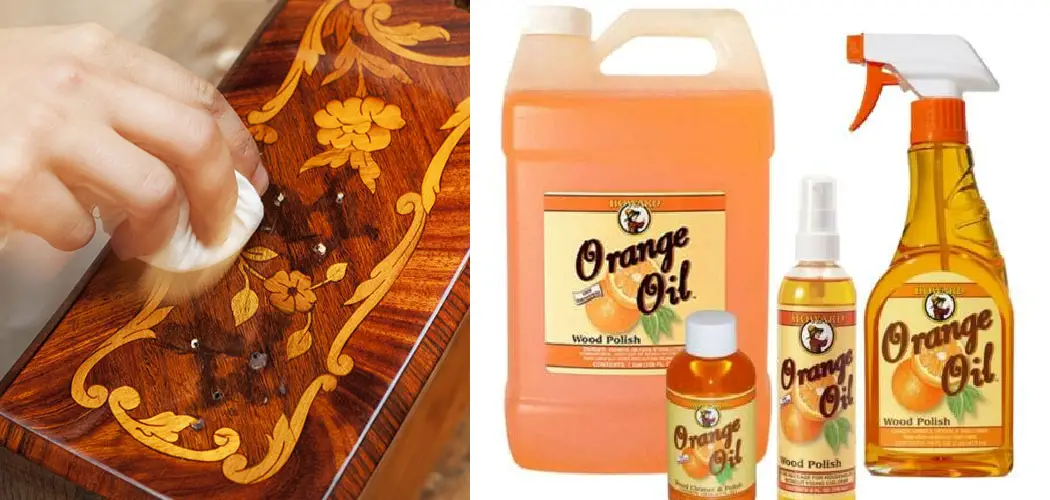Wooden furniture can last for many years when well taken care of. Polish is one way to help protect and lengthen the life of your wooden furniture. There are many different types of wood polish on the market, but orange oil is a natural option that has many benefits. In this blog post, we will discuss how to use orange oil wood polish and some of its benefits. Stay tuned.
Summary: Looking to keep your wood looking nice and polished? Check out our guide on using orange oil wood polish! This simple polish will help keep your wood looking its best, while also keeping it protected from the elements.
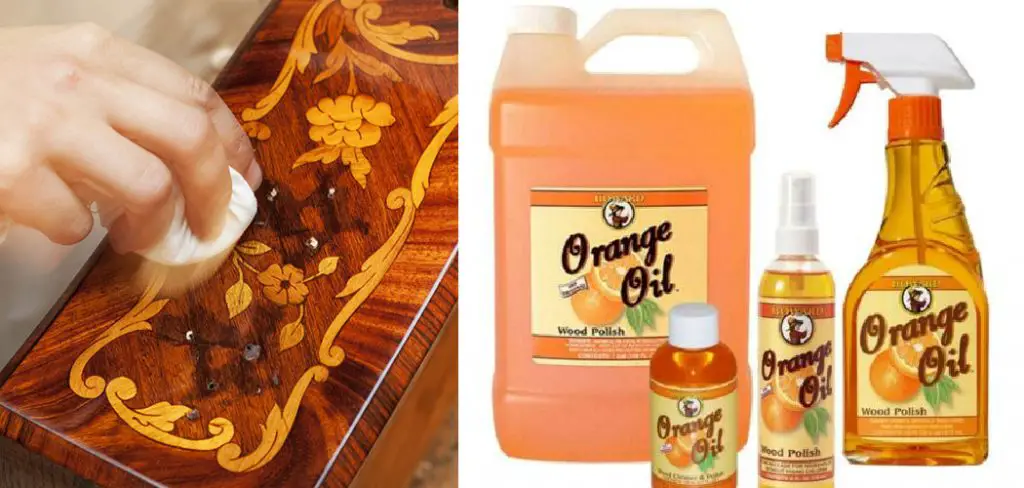
What is Orange Oil Wood Polish Good for?
There are many benefits to using orange oil wood polish. First, it helps to protect the wood from scratches and other damage. It also repels dust and dirt, which can help to keep your furniture looking clean for longer.
Additionally, orange oil polish provides a deep shine that can brighten up any room. Second, orange oil is a natural disinfectant, so it can help to keep your furniture clean and free of bacteria. Finally, orange oil has a pleasant scent that can help to freshen up any room.
12 Ways How to Use Orange Oil Wood Polish
1. As a Furniture Polish
If you want to protect your wooden furniture and keep it looking shiny, then using orange oil as a furniture polish is a great option. It is easy to apply and only takes a few minutes. First, dust your furniture with a soft cloth to remove any dirt or dust. Next, apply a small amount of orange oil to a clean, soft cloth and rub it into the wood in a circular motion. Finally, buff the wood with a clean, dry cloth to remove any excess oil and to bring out the shine.
2. To Remove Water Stains
Water stains can ruin the look of your wooden furniture. However, you can easily remove them by using orange oil wood polish. First, mix equal parts orange oil and water in a bowl. Next, dip a clean cloth into the mixture and apply it to the water stain. Finally, buff the area with a clean, dry cloth to remove any excess oil and to restore the shine.
3. As a Cleaner for Wooden Floors
Orange oil wood polish can also be used to clean wooden floors. It is a gentle cleaner that will not damage the wood. To use it, mix 1 part orange oil with ten parts water. Put the mixture in a spray bottle and spray it on the floor. Wipe the floor with a damp mop. You can also use a bucket and mop if you have a large area to clean.
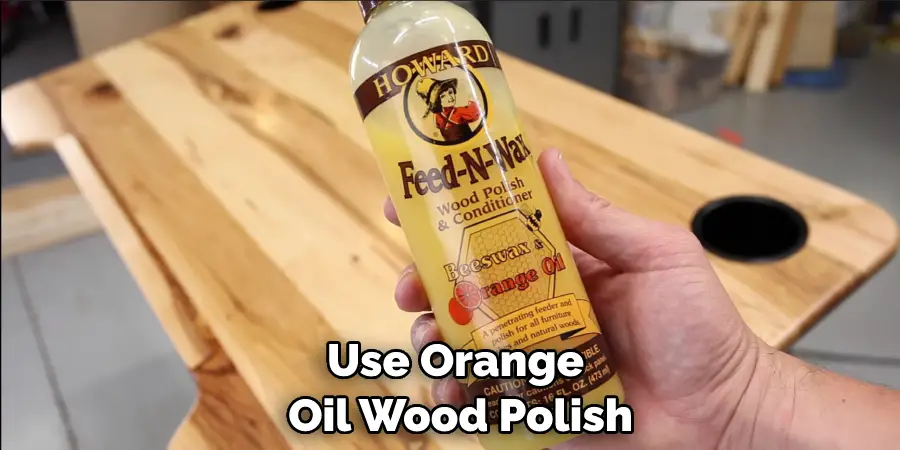
4. To Protect Wooden Tables
Tables are often used as a place to set hot cups or plates. This can cause water damage or heat stains on the wood. Orange oil can help protect your tables from these types of damage.
First, clean the table with a soft cloth. Next, apply a small amount of orange oil to a lint-free cloth and rub it on the surface of the table. Allow the oil to penetrate for several minutes before buffing it to a shine. The orange oil will help to create a barrier between the wood and any potential damage.
5. As a Natural Disinfectant
Orange oil is a natural disinfectant and can be used to clean wooden surfaces. To use it, mix 1 part orange oil with ten parts water and apply it to the surface with a clean cloth. Wipe in the grain direction and allow the surface to air dry. If you’re cleaning a large surface, you may need to reapply the mixture several times.
6. As a Wood Stain Remover
If you have stained wood furniture, you can use orange oil to remove the stains. First, make a paste of orange oil and salt. Apply the paste to the stain and let it sit for 15 minutes. Then, wipe off the paste with a clean cloth. If the stain is still visible, repeat the process. Finally, polish the wood with a clean cloth.
7. To Remove Grease Stains
Grease stains can be difficult to remove from wood. However, orange oil can help to break down the grease and make it easier to remove. To do this, apply orange oil to the affected area and then wipe it away with a clean cloth. If the grease stain is still visible, you can repeat this process until it is gone.
8. As a Furniture Refresher
If your wood furniture is looking dull, you can use orange oil to refresh it. First, dust the furniture with a soft cloth. Then, using a clean cloth, apply orange oil to the furniture. You can either apply it directly to the wood or dilute it with water. Finally, buff the furniture with a clean, dry cloth. You may need to repeat this process if your furniture is very dirty.

9. To Remove Heat Rings From Furniture
Heat rings are a common problem on wood furniture. They are caused by hot cups or plates being placed on the wood. To remove them, mix one part of orange oil with two parts of olive oil. Rub the mixture into the heat ring using a soft cloth. Let it sit for 15 minutes, then wipe it away with a clean cloth. If the heat ring is still visible, repeat the process.
10. As a Fire Starter
If you’re planning a camping trip or need to start a fire, orange oil can help. The oil is highly flammable and will help to create a steady, controlled flame. Soak a cotton ball or piece of cloth in orange oil and light it with a match. The fire will burn for a few minutes, giving you enough time to burn your wood.
11. As an Insect Repellent
Orange oil can also be used as an insect repellent. The oil repels insects such as mosquitoes, ants, and cockroaches. You can either use orange oil as is or dilute it with water. To use orange oil as an insect repellent, apply it to the areas where insects are normally seen. Reapply as needed.
12. As a Natural Air Freshener
Orange oil can also be used as a natural air freshener. The oil has a fresh, citrusy scent that can help to freshen up any room. To use orange oil as an air freshener, add a few drops to a diffuser or spray bottle. You can also add a drop or two to a cotton ball and place it strategically around your home, such as on the table, near the front door, or on the bed.
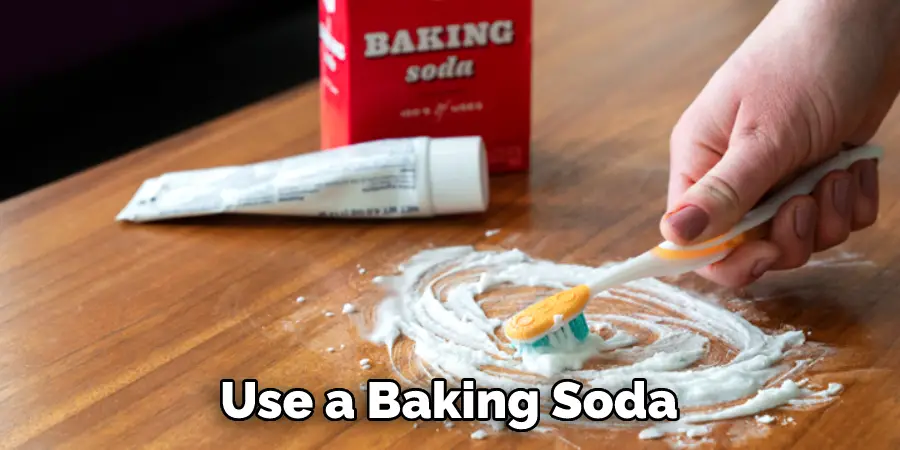
How Much Orange Oil Should You Use?
When using orange oil, it’s important to use it in moderation. The oil is potent, and a little goes a long way. If you’re using orange oil for cleaning, polishing, or disinfecting, always dilute it with water. This will help prevent surface damage and make it more effective. For other uses, such as an insect repellent or air freshener, start with a small amount and increase as needed.
How Long Does Orange Oil Take to Dry?
Orange oil usually takes a few minutes to dry. However, if you’re using it to clean or disinfect a surface, you may need to let it sit for a few minutes before wiping it away. This will give the orange oil time to work its magic and break down dirt, grime, and germs.
You Can Check It Out To Remove Danish Oil from Wood
When Should You Not Use Orange Oil?
Orange oil is a versatile product that can be used for various purposes. However, there are a few situations where you should not use it. First, orange oil should not be used on unsealed wood. The oil can penetrate the wood and cause it to swell or warp. Second, orange oil should not be used on hot surfaces.
The heat can cause the oil to evaporate too quickly, making it less effective. Finally, orange oil should not be used on open wounds or cuts. The oil can irritate and may delay healing.
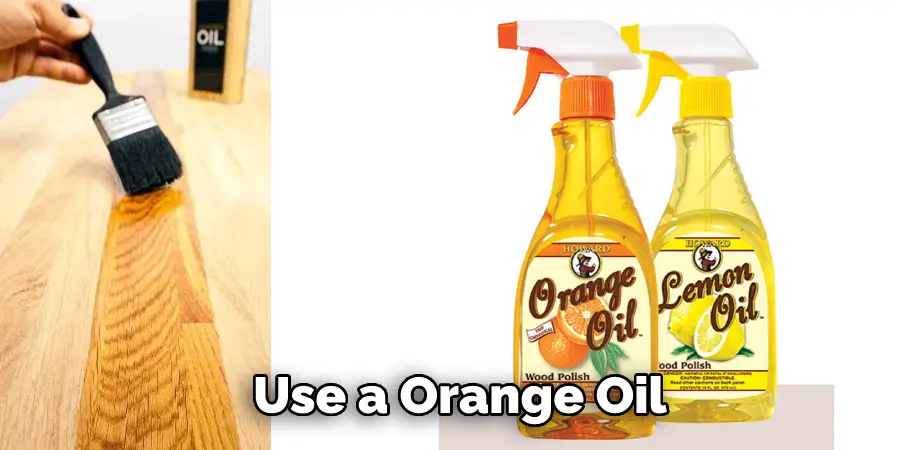
Tips and Warnings on How to Use Orange Oil Wood Polish
Tips:
- Always use a clean, soft cloth when applying orange oil wood polish to your furniture.
- Apply the polish in a small, circular motion.
- Wipe away any excess polish with a clean, dry cloth.
- Polish your furniture regularly to keep it looking its best.
- Use caution when using orange oil around pets and children.
- Be sure to read the labels on all cleaning products before use.
Warnings:
- Orange oil can be harmful if swallowed. If ingested, seek medical help immediately.
- Avoid contact with eyes and skin. If contact occurs, flush the affected area with water for 15 minutes.
- Store orange oil wood polish in a cool, dry place out of the reach of children and pets.
- Discard any unused polish according to local regulations.
- Never use orange oil wood polish on unfinished wood.
- Do not use orange oil wood polish on surfaces that will come into contact with food.
Can You Varnish Over Orange Oil?
Varnishing is a great way to protect and enhance the natural beauty of wood surfaces. However, before applying varnish, it’s important to prepare the surface properly to ensure good adhesion and a smooth, professional finish. Orange oil is a natural cleaner and solvent that can be used to remove dirt, grime, and other deposits from the surface of the wood. But can you varnish over orange oil?
The answer is it depends on a few factors. Firstly, using high-quality, pure orange oil without any added chemicals or synthetic ingredients is important. Some orange oil products contain fillers or additives that can leave behind a residue, making it difficult for varnish to bond properly.
Assuming you’re using pure orange oil, the next step is to allow the surface to dry completely before applying varnish. This may take a few hours or even overnight, depending on the humidity and temperature of the room. Once the surface is completely dry, you can lightly sand it with fine-grit sandpaper to create a smooth, clean surface to the varnish to adhere to.
How Often to Use Orange Oil?
Orange oil is a versatile and natural essential oil that can deliver a range of benefits. Its pleasant scent, antiseptic properties, and ability to repel insects make it a popular choice for household use. However, using orange oil in moderation is important, as it can irritate the skin and cause adverse effects when overused.
When using orange oil, it is important to dilute it with carrier oil, such as coconut or jojoba oil. A general rule of thumb is to use 1-2 drops of orange oil for every tablespoon of carrier oil. This will ensure that the oil is diluted enough to be safe to use.
For cleaning and disinfecting, orange oil can be added to a spray bottle filled with water and vinegar. It can also be added to laundry detergent or used as a natural air freshener by adding a few drops to a diffuser.
As an insect repellent, orange oil can be mixed with carrier oil, applied to the skin, or used in a diffuser. However, it should be used with caution as it can cause skin irritation when used in high concentrations.
Where Do You Apply Orange Oil?
Orange oil is a versatile essential oil that can be used in many different ways. One of the most common uses for orange oil is aromatherapy, where it is often used to create a relaxing and invigorating environment. To use orange oil for aromatherapy, you can add a few drops to a diffuser or humidifier and let the scent fill the room. You can also add a few drops to a warm bath to help soothe sore muscles and promote relaxation.
Orange oil is also a popular natural cleaning product. It has powerful cleaning properties and can be used to clean and deodorize surfaces such as countertops, floors, and even laundry. To use orange oil as a cleaning product, you can mix it with water and vinegar and use it as an all-purpose cleaner.
In addition to its cleaning properties, orange oil can also be used as a natural insect repellent. The scent of orange oil is known to repel many types of insects, including ants, flies, and mosquitoes. To use orange oil as an insect repellent, you can mix it with water and spray it around your home or directly on your skin.
Conclusion
So, now that you know how to use orange oil wood polish and its many benefits, it’s time to get started on your own projects! We hope you enjoy using this natural product to care for your wood furniture and floors. Have fun with it, and be sure to share your photos with us on social media so we can see how well it works for you. Thanks for reading!

